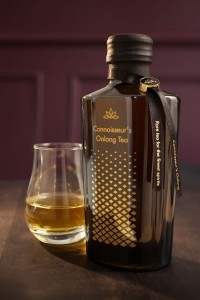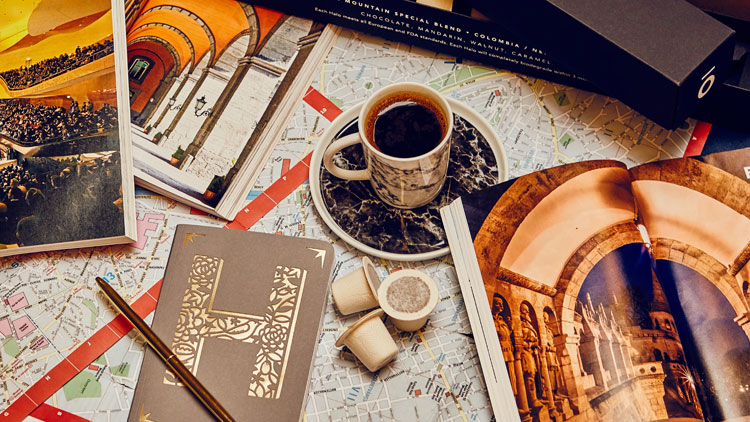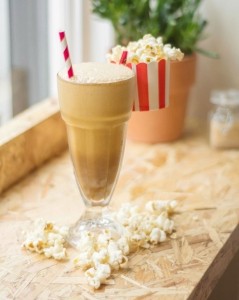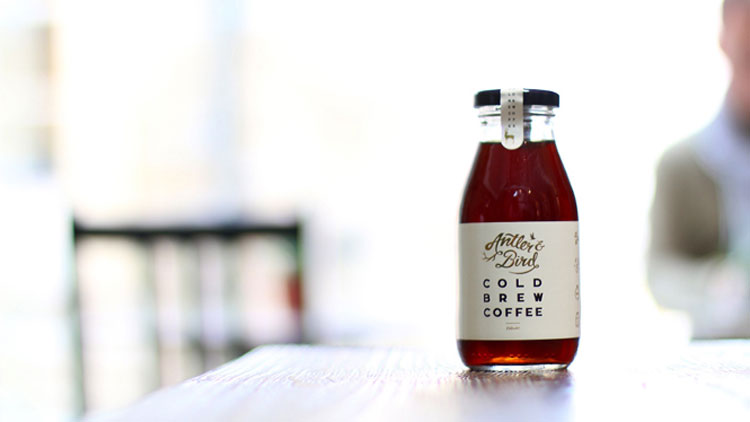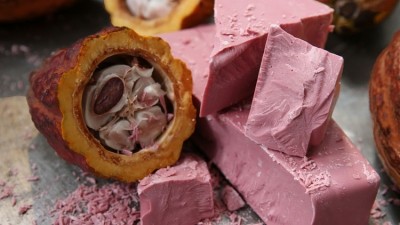Seven tea and coffee trends for restaurants to watch
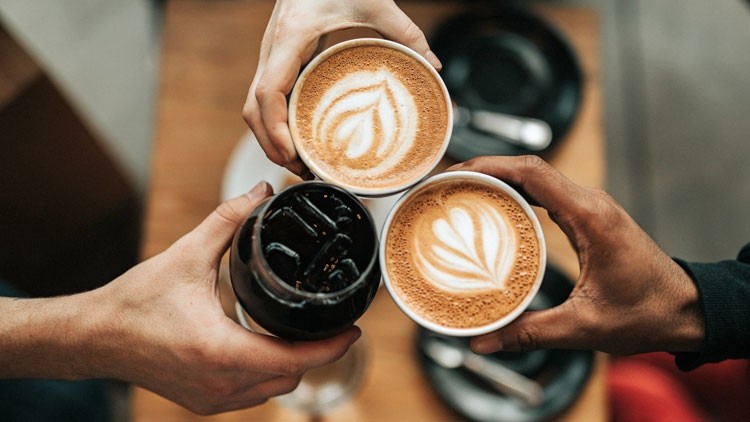
1 Desirable decaf
There’s no disputing Brits’ enthusiasm for an espresso, but not everyone appreciates the accompanying caffeine kick. Research from Allegra Strategies shows that around 6% of people order a decaffeinated coffee when they visit a coffee shop, yet most of what’s on offer is a poor imitation of the real thing.
That’s the view of Guy Wilmot, a coffee importer, who says that decaf has long been the unloved ‘ugly duckling’ of the coffee world with companies using chemical solvents to remove caffeine from poor quality beans. He co-founded Decadent Decaf in response, sourcing top quality beans and removing the caffeine using the Swiss Water Process (a gentler technique that involves soaking green beans in water).
“There’s huge demand among the public for better decaf and there’s a big opportunity for restaurants, but too many just won’t pay for quality coffee,” he says. “They need to stop thinking of it as ‘just decaf’ and start marketing it as Swiss Water decaf and allowing diners to taste for themselves.”
2 Beverages with benefits
Never mind chocolate sprinkles, people are shaking everything from protein powders and maca root over their morning brew to make so called ‘super coffees’. It’s going to be a big trend, according to Pinterest, which has seen a surge in people searching for healthy coffee ideas. Restaurants and cafes are jumping on the bandwagon (which is being driven by clean-eating, Instagram-crazed Millennials) faster than you can say skinny macchiato. Malibu Kitchen in the City offers lattes flavoured with matcha, turmeric or purple carrot, while Palm Vaults in Hackney does a velvet latte made with beetroot.
It’s enough to make us reach for the PG Tips, except something similar is happening in tea with companies such as T2 supplying health focused products, including turmeric matcha green tea, as well as pimped sweet blends containing chocolate drops and caramel pieces.
3 Tea is the new wine
Order a bottle of Benjamin & Blum at Hakkasan or Nobu and sommeliers will wax lyrical about tannin and terroir, but there won’t be any mention of abv. That’s because the drinks are made from cold-brewed tea, not grapes, and are alcohol-free.
Launched by Paul Benjamin in 2016, there are two drinks in the range – Connoisseur’s Oolong and Darjeeling White Peony – which are made using a Chinese cold-brewing technique and are flavoured with orange and honey. They are served chilled.
“As an alternative to alcohol it has an authenticity of its own; it is not trying to emulate something else, like alcohol-free beer,” he says.
Authenticity doesn’t come cheap. The menu price for a 200ml bottle is typically £20-£25, but that hasn’t deterred top end restaurants, including Nobu and Alain Ducasse at the Dorchester or their abstemious customers.
Xu, the Taiwanese restaurant from the trio behind Bao, meanwhile, offers more affordable sharing cold brew tea that the team carbonises in house. Served in a wine glass, the tea is more akin to sweet wine than a cuppa, and is a nice way to round off a meal.
4 Blue Planet effect to hit capsules?
There has been a sea change in public opinion on plastic following images of bags and packaging clogging up oceans in Blue Planet 2. So far, plastic straws have been the focus but coffee capsules could be next, with volume users such as restaurants in the firing line. Often made with materials such as aluminium and different plastics that kerbside recycling can’t handle, a huge number of capsules end up in landfill.
Start-up company Halo launched speciality coffee capsules that are compostable last year and was deluged with orders. “We started with a run of 35,000 capsules and had enquires for 21 million,” says co-founder Richard Hardwick. The capsules, which took five years to develop and fit Nespresso consumer machines, are made from plant fibres and will compost in 90 days. Investment in new equipment means the company will soon be able to make 10 million capsules a year, with hospitality a focus. “We will start by targeting high-end restaurants because we want to be known as much for the quality of our coffee as the fact we’re environmentally friendly,” says Hardwick.
The big coffee brands have not been resting on their laurels either. Lavazza has developed a capsule made from thistles that can be industrially composted, while Nespresso has introduced new recycling schemes for its retail and trade customers.
5 Coffee+cocktails=Iced Popcorn Frappé
Just as the range of options in coffee shops has increased (anyone for an oat milk cortado?) so has the variety of coffee cocktails in bars and restaurants.
Last year’s UK Coffee Week saw plenty of new caffeine and booze combinations, including a cold-fashioned (Clement RhumAmbre and cold brew coffee) at Social Wine & Tapas, and Lucuma Kawji (coffee, Peruvian rum and Lucuma fruit) at Lima. And we should expect more innovation in 2018, according to a recent report by strategic foresight company The Future Laboratory. Commissioned by Tia Maria, the report claims a new ‘global coffee cocktail culture’ is about to take off thanks to ‘a perfect synergy of coffee and cocktail cultures’.
Tia Maria is doing its bit to add to the synergy by developing new recipes, such as Iced Popcorn Frappé, made with Tia Maria, espresso, milk and popcorn syrup, and topped with popcorn.
6 Teatime anytime
Haute cuisine and a cuppa is a well-established trend in the US where expert sommeliers pair fine teas with specific dishes or menus. Two-Michelin-starred New York restaurant Atera’s ‘tea progression’, for example, costs $95 and typically comprises six teas matched to the 12-18 course tasting menu.
British restaurants have also picked up on the idea – Fera, Club Gascon and The Clove Club offer tea matches with their menus, while The Langham hotel has worked with Rare Tea Company to develop pairings for its afternoon tea, such as scones with Tregothnan Estate Chamomile from Cornwall. “Our tea sommeliers brew and present each tea at the table and provide an insight into the tea’s heritage and what make it so special,” says Ashley Saxton, The Langham’s director of food and beverage.
7 Cold brew with bottle
Any coffee shop that knows its beans will have a cold brew coffee on the menu. The technique, which has nothing to do with iced coffee, involves steeping ground coffee in cold water for up to 24 hours to create a smooth, sweet and refreshing drink. It’s a trend that hasn’t found its way into many restaurants yet, but could soon take off.
“Making cold brew in-house can be a nightmare in hospitality because it goes off quickly, there’s quite a bit of labour involved and they can be left with results that are not very good,” says Theo Garcia, co-founder of bottled cold brew company Antler & Bird. Buying ready-to-drink, long-shelf-life cold brew brands would seem the obvious solution, but Garcia says that restaurants are reluctant to stump up for a product they see as ‘just coffee’. “People are not that familiar with the product and compare it to iced coffee,” he says. “It needs education.”
Coffee waves explained (and what they mean for restaurants)
Opinions differ as to which coffee wave the industry is currently in. Speaking generally, ‘waves’ define consumers’ relationship with coffee. The term was coined by coffee historian Timothy Castle to describe the growth of ‘craft’ coffee in North America.
Most would agree that the third wave arrived in the early noughties as coffee quality drastically improved and consumers got more interested in the character of the coffee itself, where it’s from, how it’s created, who trades it, who roasts it and how it is brewed.
The fourth wave of coffee was mooted at the beginning of this decade but its actual arrival date is a point of debate. This wave saw baristas elevated to artisan status, controlling brews through better attention to origin and a keener appreciation of the science of coffee. Lavazza UK sales and marketing director Barry Kither believes that restaurants largely missed out on the fourth wave. “It was beardy, specialist stuff. Weighing the water, dialling in the grind. That sort of thing is a poor fit for most restaurants because they’re unlikely to have a full-time barista,” he says.
Kither thinks coffee is transitioning from the fourth wave to the fifth wave, and that restaurants are better placed to capitalise on the latter than the former. “The fifth wave is about the business of coffee and convenience. People want a great and consistent product, but they want it on their own terms. They don’t want to wait, and a lot of places on the bleeding edge of the coffee scene will make you wait for a drink.”
Kither is now recommending that nearly all restaurants go down the capsule route. “Don’t try and be an artisan if you don’t have the right skills, or indeed the right amount of volume. Most restaurants can’t justify using whole beans. Capsules allow restaurants to offer consistent quality, and they also allow restaurants to offer lots of different varieties.”
Phil Smith, head of category and insight at UCC Coffee UK & Ireland, believes 2018 is going to be the year restaurants take coffee seriously. “This means taking steps to meet customers’ expectation of quality coffee. We’ll see a rise in operators introducing a quality coffee offer that gives diners the high street-quality coffee they’re used to, at the price they’ve come to expect it,” he says.
“We’ve seen the rise of coffee as a connoisseur item, and 2018 is the year we’ll start to see this translate into the restaurant sector. With customers being au fait with coffee origins, brewing methods and taste descriptors, restaurants will need to market coffee like they do food and wine, and promote the quality of their coffee on drink menus."
This article first appeared in the February issue of Restaurant magazine, the leading title for the UK's restaurant industry. For more features, comment, interviews and in-depth analysis of the restaurant sector subscribe to Restaurant magazine here.
